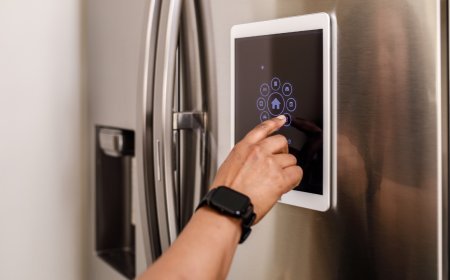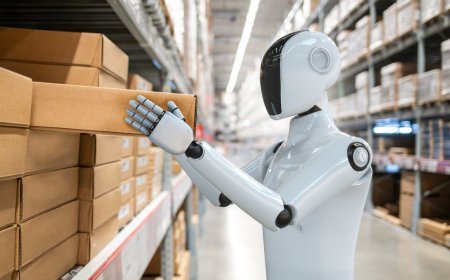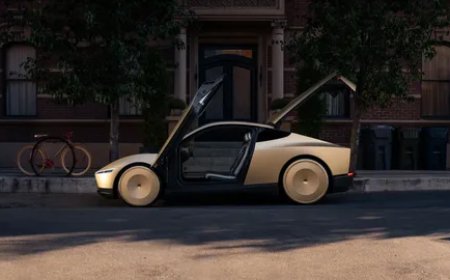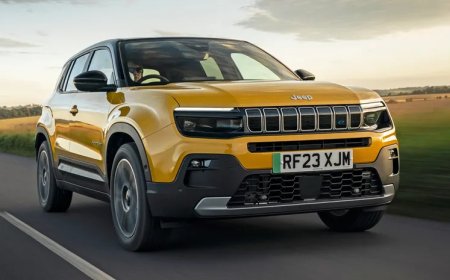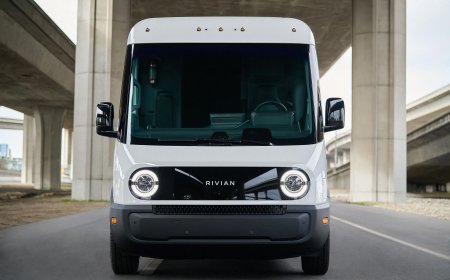The Future of Transportation: The Rise of Robotaxis
The transportation landscape is undergoing a seismic shift, with autonomous vehicles at the forefront of this revolution. Among these, robotaxis—self-driving taxis that operate without a human driver—are poised to redefine urban mobility. Combining cutting-edge artificial intelligence, advanced sensors, and robust connectivity, robotaxis promise to make transportation safer, more efficient, and accessible. This article explores the rise of robotaxis, their technological underpinnings, benefits, challenges, and their potential to transform how we move.

What is a Robotaxi?
A robotaxi is a fully autonomous vehicle designed to provide on-demand transportation services without a human driver. Operated by companies like Waymo, Cruise, and Tesla, these vehicles leverage advanced technologies such as AI, machine learning, LiDAR, radar, and high-definition cameras to navigate complex urban environments. Passengers can summon a robotaxi via a smartphone app, much like traditional ride-hailing services, but the experience is entirely driverless.
Unlike privately owned autonomous cars, robotaxis are typically part of a shared mobility fleet, offering a cost-effective alternative to car ownership. They aim to reduce traffic congestion, lower emissions, and provide equitable access to transportation, particularly in densely populated cities.
The Technology Behind Robotaxis
The backbone of robotaxi technology lies in a sophisticated blend of hardware and software:
-
Sensors and Perception: Robotaxis rely on LiDAR (Light Detection and Ranging), radar, and cameras to create a 360-degree view of their surroundings. These sensors detect obstacles, pedestrians, and traffic signals in real time, ensuring safe navigation.
-
Artificial Intelligence and Machine Learning: AI algorithms process sensor data to make split-second decisions, such as braking to avoid a collision or navigating a busy intersection. Machine learning enables the system to improve over time by learning from vast amounts of driving data.
-
High-Definition Mapping: Robotaxis use detailed maps to understand road layouts, traffic rules, and lane configurations. These maps are continuously updated to reflect changes in road conditions.
-
Connectivity: 5G and vehicle-to-everything (V2X) communication allow robotaxis to interact with other vehicles, traffic infrastructure, and cloud-based systems for real-time updates and coordination.
-
Redundancy Systems: To ensure safety, robotaxis are equipped with backup systems for critical functions like steering and braking, minimizing the risk of failure.
Companies like Waymo have logged millions of miles in testing, refining these technologies to handle diverse scenarios, from heavy rain to chaotic urban intersections.
Benefits of Robotaxis
The adoption of robotaxis could bring transformative benefits to individuals, cities, and the environment:
-
Enhanced Safety: Human error accounts for over 90% of traffic accidents. By eliminating the human driver, robotaxis can significantly reduce collisions caused by distractions, fatigue, or impaired driving.
-
Cost Efficiency: Robotaxis eliminate the need for driver wages, potentially lowering ride costs. For many, they could be a cheaper alternative to owning a car, especially when factoring in maintenance, insurance, and fuel.
-
Environmental Impact: Most robotaxis are electric, reducing greenhouse gas emissions. Shared mobility models also decrease the number of vehicles on the road, easing traffic congestion and further cutting emissions.
-
Accessibility: Robotaxis can provide mobility for those who cannot drive, such as the elderly, disabled, or those without access to personal vehicles, fostering greater independence and inclusion.
-
Urban Space Optimization: With fewer people owning cars, cities could reclaim parking lots and garages for green spaces, housing, or other public uses.
Challenges and Hurdles
Despite their promise, robotaxis face significant challenges:
-
Technical Limitations: While autonomous driving technology has advanced, it still struggles with edge cases, such as unpredictable pedestrian behavior or extreme weather conditions. Ensuring reliability in all scenarios remains a hurdle.
-
Regulatory Barriers: Governments worldwide are grappling with how to regulate robotaxis. Questions about liability, safety standards, and licensing vary by region, slowing deployment.
-
Public Trust: Gaining consumer confidence is critical. High-profile accidents involving autonomous vehicles have raised skepticism, and many people remain wary of entrusting their safety to a machine.
-
Job Displacement: The rise of robotaxis could disrupt the livelihoods of millions of drivers in the ride-hailing and taxi industries, raising concerns about economic impacts.
-
Infrastructure Needs: Widespread adoption requires robust 5G networks, updated traffic systems, and charging infrastructure for electric robotaxis, which demands significant investment.
The Current State of Robotaxis
As of October 2025, several companies are leading the robotaxi race:
-
Waymo: A pioneer in the field, Waymo operates fully driverless robotaxis in cities like Phoenix, San Francisco, and Los Angeles. Its fleet has completed millions of autonomous rides, setting a benchmark for safety and reliability.
-
Cruise: Backed by General Motors, Cruise is expanding its driverless services in San Francisco and other U.S. cities, focusing on scalable operations.
-
Tesla: Tesla’s Full Self-Driving (FSD) technology aims to enable its vehicles to serve as robotaxis. Elon Musk has touted a future where Tesla owners can earn income by adding their cars to a robotaxi network.
-
International Players: Companies like Baidu in China and Yandex in Russia are deploying robotaxis in their respective markets, adapting to local regulations and road conditions.
Recent milestones include Waymo’s expansion to Austin and Atlanta, and Cruise’s partnerships with municipalities to integrate robotaxis into public transit systems. However, scaling to nationwide or global operations remains a work in progress.
The Future of Robotaxis
The next decade will likely see robotaxis become a mainstream mode of transportation. Analysts predict that by 2030, robotaxis could account for a significant portion of urban rides, with some estimates suggesting a market size exceeding $1 trillion. Key trends shaping this future include:
-
Integration with Public Transit: Robotaxis could serve as “last-mile” solutions, connecting commuters to train or bus hubs, creating seamless multimodal journeys.
-
Sustainability Push: As cities prioritize decarbonization, electric robotaxis will play a central role in reducing urban emissions.
-
Personalized Experiences: Future robotaxis may offer customizable interiors, entertainment, and productivity features, turning commutes into productive or relaxing experiences.
-
Policy Evolution: Governments will need to streamline regulations, balancing innovation with safety and public interest.
Robotaxis represent a bold vision for the future of transportation—one that prioritizes safety, efficiency, and sustainability. While challenges remain, the rapid pace of technological advancement and growing investment suggest that robotaxis are not just a futuristic dream but an imminent reality. As companies like Waymo, Cruise, and Tesla continue to push boundaries, and as cities adapt to this new paradigm, robotaxis have the potential to reshape urban life, making transportation more equitable and environmentally friendly. For now, the road ahead is exciting, and the journey has only just begun.
What's Your Reaction?
 Like
0
Like
0
 Dislike
0
Dislike
0
 Love
0
Love
0
 Funny
0
Funny
0
 Angry
0
Angry
0
 Sad
0
Sad
0
 Wow
0
Wow
0







